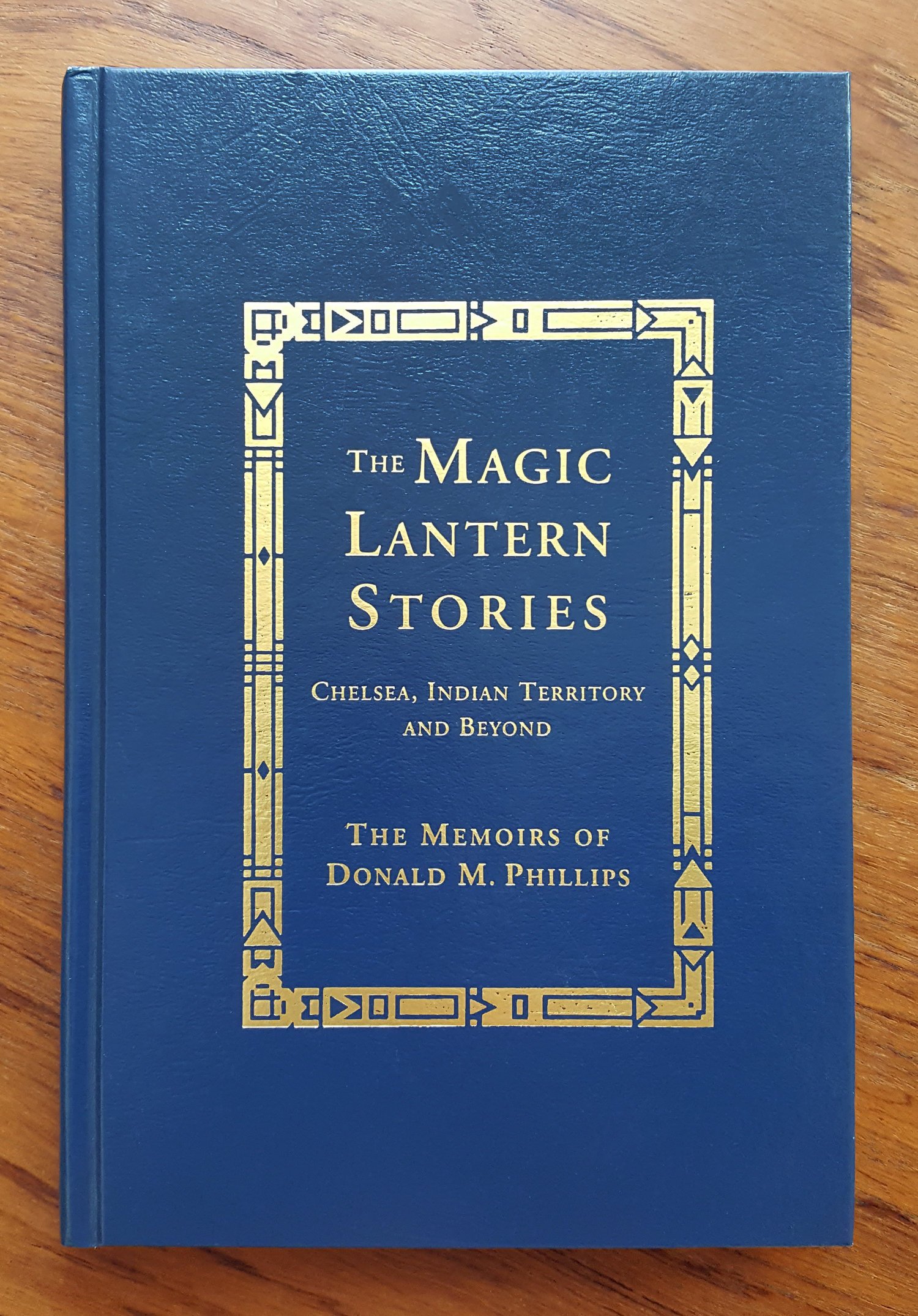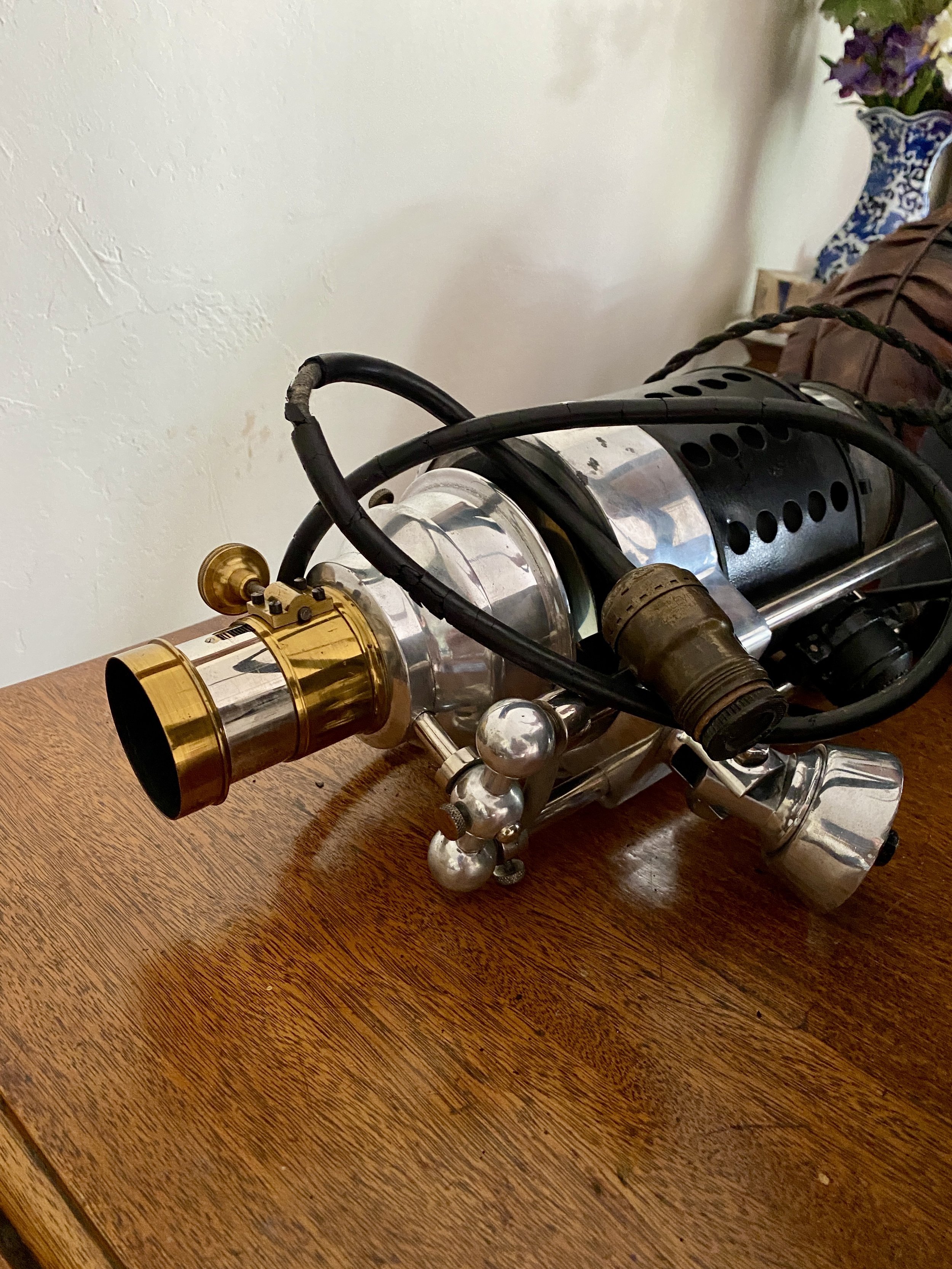The Magic Lantern Stories edited by Joyce and Gary Phillips
Have you ever seen a Magic Lantern? Not the kind you rub to make a genie appear! The Magic Lantern I’m referring to is a 17th-century invention, precursor to the slide projector of the 20th century. (I realize I’m dating myself by even referring to a 20th-century slide projector.)
To begin, I must go back to last month, December 2023, when I succumbed to my first case of COVID and was forced into isolation at home, in my bedroom. With hours and hours of free time, I took up a number of activities I hadn’t had time for in the past three decades, such as organizing my exploding yet colorful socks drawer; going through an old (paper) address book (I’m dating myself again) and writing cards to people who hadn’t crossed my mind since childhood; cleaning out old bathroom shelves that held all manner of nearly empty shampoo and conditioner bottles from the early 2000s (well, there were three teenage daughters with Rapunzel-long hair who shared the bathroom during that time); making space on the surfaces of two bedside tables, which entailed plowing through thick layers of dust and rescuing coins, hair ties, guitar picks, and other everyday necessities from the ancient riff-raff of receipts, expired sore-throat lozenges and inhalers, dead pens, dead bugs (the ubiquitous and prehistoric stinkbugs that grace New England country homes in the fall), illegible Post-It notes, and stacks of unread books, the ones that lie by your bed but that you never get to read and you don’t want to put away.
“Ancestors came to life in black and white.”
(I am getting to the Magic Lantern part.)
During my convalescence, I also decided to take up something I felt certain I’d never start until I was retired: reading Proust. (This seed was planted some years back by my late friend Jenny, who loved Proust, and when I worked on a client’s book entitled Reading Proust to My Mother, which I wrote about in our October 2023 newsletter.) On my bookshelf stood a six-volume set of In Search of Lost Time by Marcel Proust, waiting patiently for my attention in a distant-future date. But now, floating in the doldrums of shelter-in-place, I felt compelled to pull out Volume 1, Swann’s Way (publ. 1913).
Daunting at first glance, the first chapter immediately drew me in, as Proust describes various ephemeral states of sleeping, dreaming, and reminiscence. Reading his long, long sentences (yes, apologies to Marcel, I’m influenced by the author) also helped me fall asleep and get the much-needed rest for my recovery, which fortunately came quickly. I only made it to page 83 after about a week. But on page 9, I made a wondrous discovery, which I highlighted with one of the almost-dead pens still on my bedside table. Excerpted below, the narrator describes his childhood, as a depressed and anxious young boy:
At Combray, as every afternoon ended, long before the time when I should have to go to bed and lie there, unsleeping, far from my mother and grandmother, my bedroom became the fixed point on which my melancholy and anxious thoughts were centred. Someone had indeed had the happy idea of giving me, to distract me on evenings when I seemed abnormally wretched, a magic lantern, which used to be set on top of my lamp while we waited for dinner-time to come; and, after the fashion of the master-builders and glass-painters of Gothic days, it substituted for the opaqueness of my walls an impalpable iridescence, supernatural phenomena of many colours, in which legends were depicted as on a shifting and transitory window.
Did you catch the reference to the Magic Lantern? I was surprised to read of it because I had already learned of and even seen a Magic Lantern by the time I read this passage, and here was Proust writing in the days when it was still somewhat of a newfangled invention! I could imagine the Magic Lantern sitting on the table there by the lonely boy’s bed, projecting blurry drawings of childhood stories on the walls of his bedroom to cheer him up.
The Phillips’ Magic Lantern
Gary Phillips and his Magic Lantern
Well, to backtrack even further, the first time I heard of a Magic Lantern was about a decade ago, when a lovely woman by the name of Joyce Phillips came to Modern Memoirs with a written memoir/family history entitled, of all things, The Magic Lantern Stories. I wondered what the title meant. She told me her husband had inherited (from his grandfather) this antique projector, and the family photos were originally printed on large glass slides that were projected via this contraption. I still couldn’t really imagine what it was, but it sounded intriguing. Ultimately we published her book, and in it are their gorgeous old family photos, now in print for future generations who don’t have a Magic Lantern to view them.
Inserting glass slides
Image projected by Magic Lantern on wall
Fast forward (sorry I’m jumping all around here) to a decade after we’d published The Magic Lantern Stories book, when I had the great fortune to meet Joyce Phillips in California, where she lived. With the utmost hospitality, she invited me to her home, and after a delectable Pacific pescetarian lunch, her equally lovely husband, Gary, pulled out a large wooden box in which lay… the Magic Lantern! And another box in which rested the 4½ x 5” glass slides, imprinted with early 1900s images of San Diego swimmers in full “bathing costumes,” Model T cars, oil derricks in Oklahoma, camping in Yellowstone park, Yosemite falls, and much, much more.
I’ll say no more in this roundabout tale, except that it was one of the most enthralling afternoons I’ve had in a long time. Not only were Joyce and Gary the consummate hosts and wonderful company, but I got to witness a technological wonder from days of yore—the Magic Lantern—with original family photos projected on the wall of their living room. Ancestors came to life in black and white. Truly magical!
Ali de Groot is director of publishing for Modern Memoirs.






